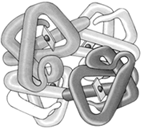Vasopressin is a hormone that is primarily released when the body is low on water. Release of vasopressin causes the kidneys to conserve water by concentrating urine and decreasing urine output. However, vasopressin also has additional functions in other tissues such as the brain and blood vessels, which are not directly involved in urine production. How could it be possible for vasopressin to
trigger different responses in different tissues?
A. Vasopressin can bind to, and act on, different receptor subtypes, leading to different cellular responses
in different tissues.
B. Vasopressin can be released at different times to result in different effects.
C. Vasopressin binds to the same exact receptor in different tissues, but causes a different conformational
change to the receptor in each tissue.
D. The kidneys have a receptor for vasopressin, but cells in the brain and blood vessels do not have a
receptor for vasopressin.
A. Vasopressin can bind to, and act on, different receptor subtypes, leading to different cellular responses
in different tissues.
You might also like to view...
Did Darwin develop his theory of evolution through experimentation or observation or other methods?
A. Experimentation. B. Observation. C. Both experimentation and observation because he collected samples but also worked experimentally with finches. D. Mathematical analysis of experimental data.
A species has 6 chromosome pairs in each diploid cell. How many genetically unique gametes could be produced from sexual reproduction in this species, accounting only for independent assortment?
A. 64 B. 8 C. 36 D. 9 E. 16
Bacillus infernus is a bacterial species that may be found living
a. at 75°C (167°F) on rocks 3 kilometers beneath earth's surface. b. in our vegetables c. in glaciers. d. at 37°C in our body. e. in all of these locations.
Assume that the shaded portions of the molecule in the accompanying figure each represent different polypeptide
chains. What does this represent?
a. cellulose
b. a carotenoid
c. an amino acid
d. a steroid hormone
e. the quaternary structure of a protein